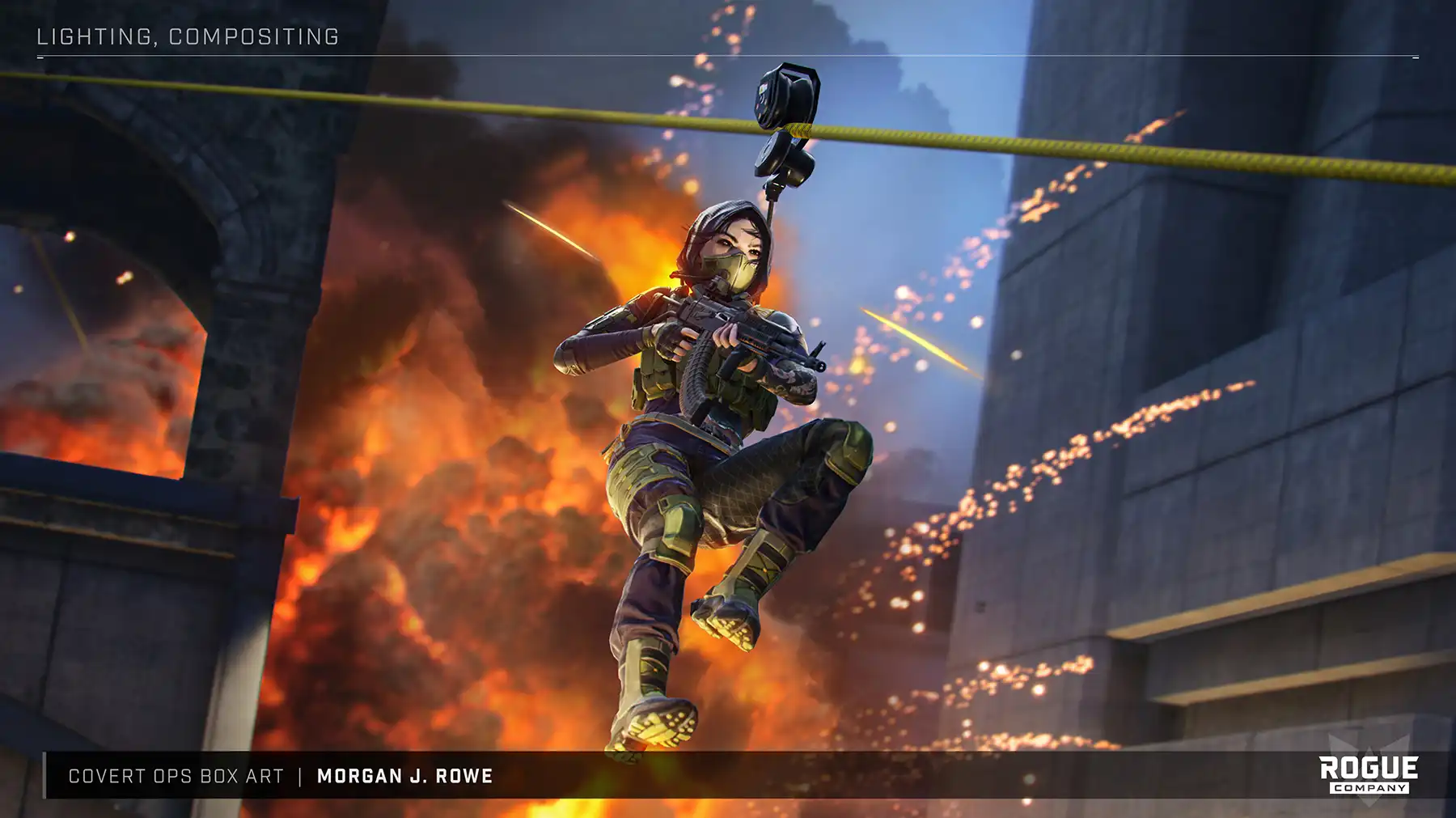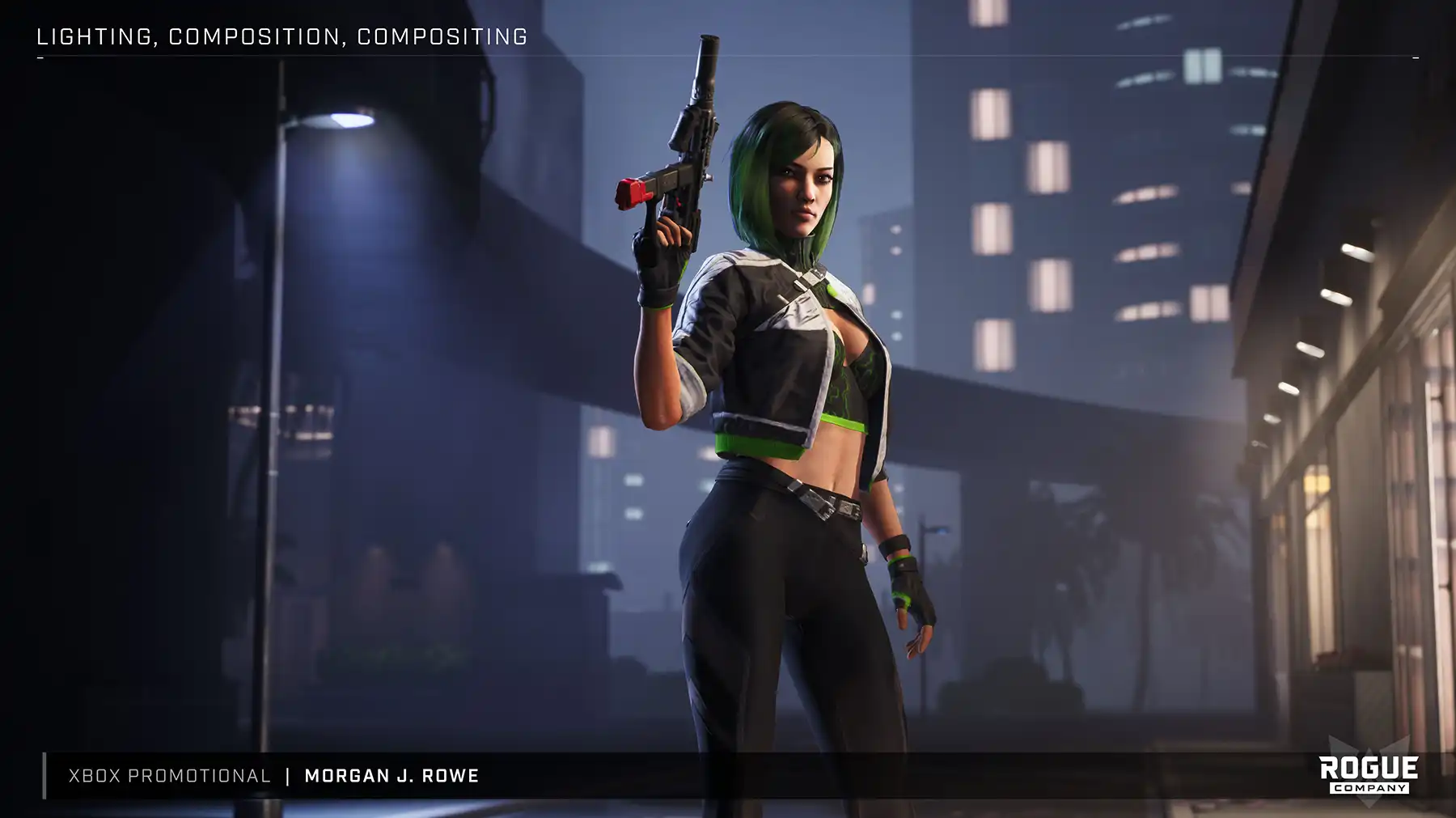One day in 2023, DigiPen alum and professional lighting artist Morgan Rowe received the ultimate Uno reverse card. The 2017 BFA in Digital Art and Animation graduate reached out to Department of Digital Arts chair Alain Schneuwly, a former instructor of hers, looking to take advantage of DigiPen’s free alumni audit benefits. “I’m always trying to learn and evolve,” Rowe says, “so I asked him, ‘Does DigiPen have any new lighting courses I could take on the side?’ He said, ‘We don’t, but do you want to teach one?’”
At the start of the Fall 2023 semester, six years after graduating, Rowe stood on the other side of the classroom for the first time, instructing DigiPen’s brand new CG 391 Introduction to Lighting in Games with Unreal Engine course. Recently wrapping up her fourth semester teaching the self-designed course, Rowe says the experience has already come with lots of lightbulb moments. “Teaching has been a great way to learn! I’m seeing things through perspectives I don’t normally think about,” Rowe says.
When Rowe first arrived at DigiPen as a student in 2013, her future as a lighting artist was still coming into focus. “Lighting was something I was always really interested in but didn’t know much about,” Rowe says. While she did learn how to light individual props and assets created in Maya through her 3D graphics coursework, the art of lighting entire scenes or levels in game engines remained outside of Rowe’s purview.

“Even though I was curious about lighting, long term I thought I wanted to do environment art,” Rowe says. With impressive 3D work on display in her senior game project Elegy, Rowe quickly landed a job doing just that. After a brief internship at Hardsuit Labs out of DigiPen, Rowe was brought on as a full-time junior environment artist at the studio, setting to work on Vampire: The Masquerade – Bloodlines. Months later, the studio realized it would need to increase the size of its lighting team to meet its production needs.
“I had expressed my interest in learning how to do lighting before, so my manager said, ‘Instead of getting someone external, why don’t we pull someone from the team who already knows the project and is interested in learning?’” Rowe says. Excited to take the leap, Rowe transferred from the environment department to the lighting department, getting a crash course in the specialized field from a senior lighting artist on the team. “That’s when I was really like, ‘I love this. This is for me,’” Rowe says. “I saw all the pieces coming together.”
Requiring a mix of personal artistry and technical depth with a dash of psychology, Rowe fell head over heels for lighting, a field she calls something of an invisible art. “Lighting is one of those things where if it’s done really well, you don’t notice it. You just feel it,” Rowe says. “It helps tell the story and evoke feelings in the player, but it’s also the subliminal messaging of the game. I love guiding players through the game space with lighting and thinking about the psychological aspects of it.”
Lighting is one of those things where if it’s done really well, you don’t notice it. You just feel it.
Rowe continued to expand her skillset after moving from Hardsuit Labs to Hi-Rez Studios to work on their online multiplayer hero shooter, Rogue Company. In 2022, Rowe took on a new challenge: lighting for a high-detail, hyper-realistic sports title. Seizing the opportunity, she found herself upping her lighting know-how even more to meet the game’s rigorous visual standards.
Bringing that experience to the classroom at DigiPen, Rowe structured her introductory lighting course to reflect the realities of her work in a production setting. “I sat down and went, ‘How do I mimic what I do on a day-to-day basis for students and give them the tools they need to be successful as a lighting artist in this job?’” Rowe says. Students complete a series of six weekly assignments through the course to hone their technical skills, as well as tackle two major projects that allow them to showcase their artistry by utilizing the two main methods of 3D lighting to light a scene.
The first project has students using older “static” lighting methods that require fewer computing resources by “baking” the light into the environment. The second project has them using cutting-edge “dynamic” illumination, which lights game spaces in real time but demands more processing power. Given that lighting is one of the most performance-hungry elements of 3D graphics, knowing how and when to properly use the two methods can make or break a game.

It’s a scenario Rowe faced herself near the end of her DigiPen career as a student. “I think back to my senior game project and go, ‘What were we thinking?’” Rowe says. “We mixed static and dynamic lights, and not knowing some of the basics, we ended up putting all this extra work on our poor rendering engineer because we were constantly rendering all these things we didn’t need to. I hope students use lessons from my course in their game projects, not only to make them look good but also to keep them from tanking the computer!”
Beyond the classroom, Rowe has also been hard at work helping students make professional connections. After DigiPen Pride Club member and BS in Computer Science and Game Design student Sakura Shih noticed Rowe’s DigiPen hat at a Seattle Indies queer gaming event both attended, the two collaborated to bring something similar to DigiPen students. Roping Schneuwly in to help coordinate, Rowe helped host a “Celebrating LGBTQIA+ Individuals in Games Mixer” event in January — co-sponsored by DigiPen and Seattle Indies. Inviting students and professionals to connect as fellow LGBTQIA+ game developers in the area, the event was a resounding success.
“I want to do whatever I can do to get students to talk to each other, to other people in the industry, and to find mentors. That’s one of the most critical things DigiPen does that I also want to do for our students,” Rowe says.
The other most critical thing? “Learn good lighting!” she says. “You can have the best-looking work in the world, but if it’s lit poorly, it’s going to look bad!”
*Morgan Rowe speaks as an individual and not as a representative of any corporate entity.
